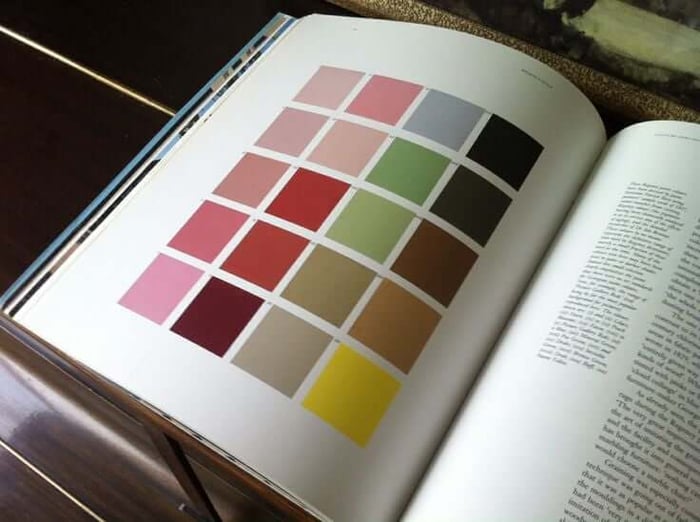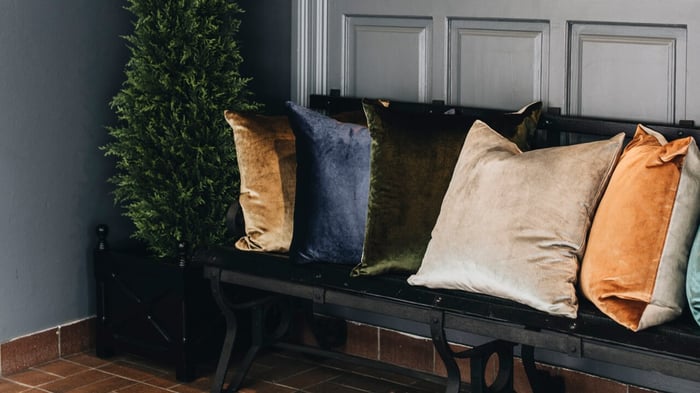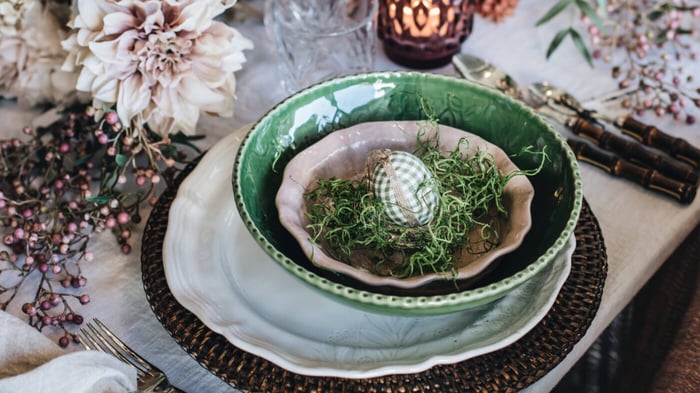Table of Contents
- Photo Source: Louise Adby Photography
- What Defines Regency Style?
- The Regency Style Colour Palette
- Regency Architectural Features
- Photo Source: Ben Pentreath
- Flooring and Surfaces
- Photo Source: Top: Bryan O'Sullivan Design | Bottom: Man with a Hammer
- Regency Style Lighting
- Photo Source: David HicksWindow Treatments
- Photo Source: ADAM ArchitectureRegency Furniture and Layout
- Photo Source: Louise Booyens
- Social Function of the Rooms
- Photo Source: Ben PentreathTexture and Materials
- Artwork and Mirrors
- Photo Source: Louise Adby Photography
- Regency Style Accessories
- Photo Source: Sims Hilditch
- Living Energy: The Role of Plants
Step back in time to the early 19th century and explore one of history’s most refined and romantic interior styles: Regency Style Interior Design.
Made popular again by modern screen adaptations such as Bridgerton, Pride and Prejudice, and Emma, Regency interiors are admired for their graceful symmetry, classical influences, and enduring elegance.
Whether you are decorating a period home or simply looking to bring romanticism and ornamentation into your space, this guide will take you through the key elements of Regency style—and how to translate them into your own home.
Love the look?
Browse our curated Regency-inspired pieces online or visit us in-store to shop the look.
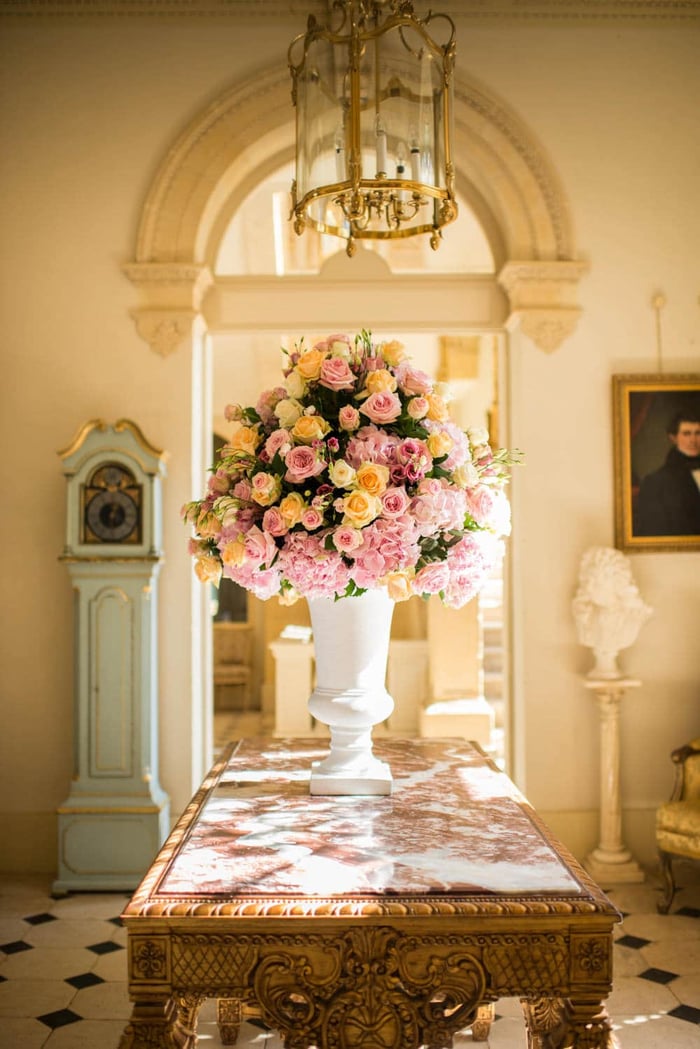 Photo Source: Louise Adby Photography
Photo Source: Louise Adby Photography
 Photo Source: Louise Adby Photography
Photo Source: Louise Adby PhotographyWhat Defines Regency Style?
The Regency period is named after the Prince Regent, later King George IV, who ruled in place of his father, George III, between 1811 and 1820.
This era was heavily inspired by Greek and Roman antiquity, with interiors that balanced refinement, romanticism, and grandeur. Architectural symmetry, elegant detailing, and classical motifs all played a role in shaping the signature aesthetic.
The Regency Style Colour Palette
Regency interiors embraced a bold yet refined approach to colour. The palette was expressive and layered, full of personality, but always balanced and considered.
Rich jewel tones such as emerald green, sapphire blue, and ruby red brought drama and depth, while soft pastels like celestial blue, apple green, and maiden blush rose provided contrast and delicacy.
Earthy tones such as Etruscan red, Pompeian yellow, and amaranth grounded the space and added a historical richness.
Styling tip:
Introduce bold colour in small areas, such as a powder room, reading nook, or a single statement chair or ottoman.
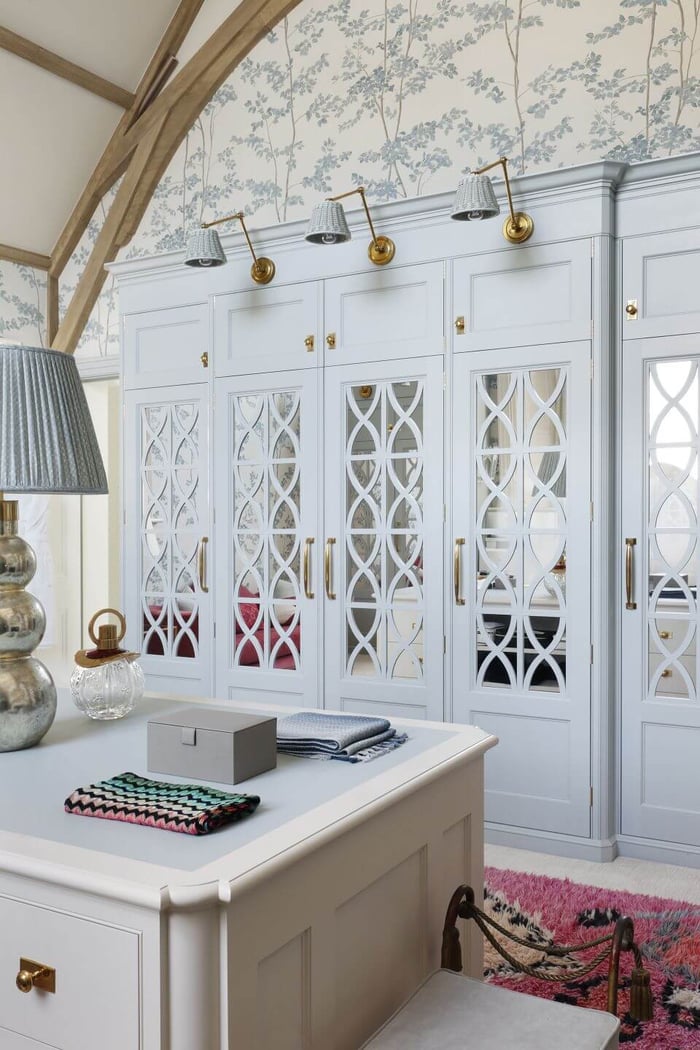 Photo Source: McCall Design
Photo Source: McCall Design Photo Source: Ben Pentreath
Photo Source: Ben PentreathRegency Architectural Features
Architecture during the Regency period was defined by balance, proportion, and classical restraint.
Exteriors were typically finished in stucco and painted in white or soft stone hues. Wrought iron balconies, tall sash windows, and elegant mouldings completed the look.
Inside, ceilings were high and adorned with plaster medallions and ornate cornices. Mantels were grand yet restrained, often featuring tapered jambs, slim linear mouldings, and distinctive bullseye carvings.
Designers such as John Nash and Henry Holland left a lasting mark with their iconic projects including Regent’s Park and the Royal Pavilion in Brighton.
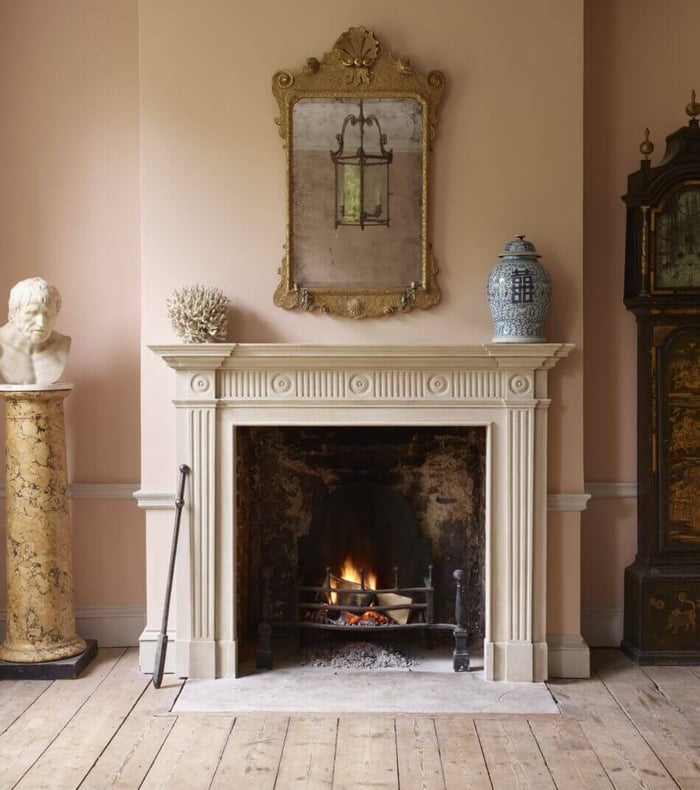 Photo Source: Jamb
Photo Source: Jamb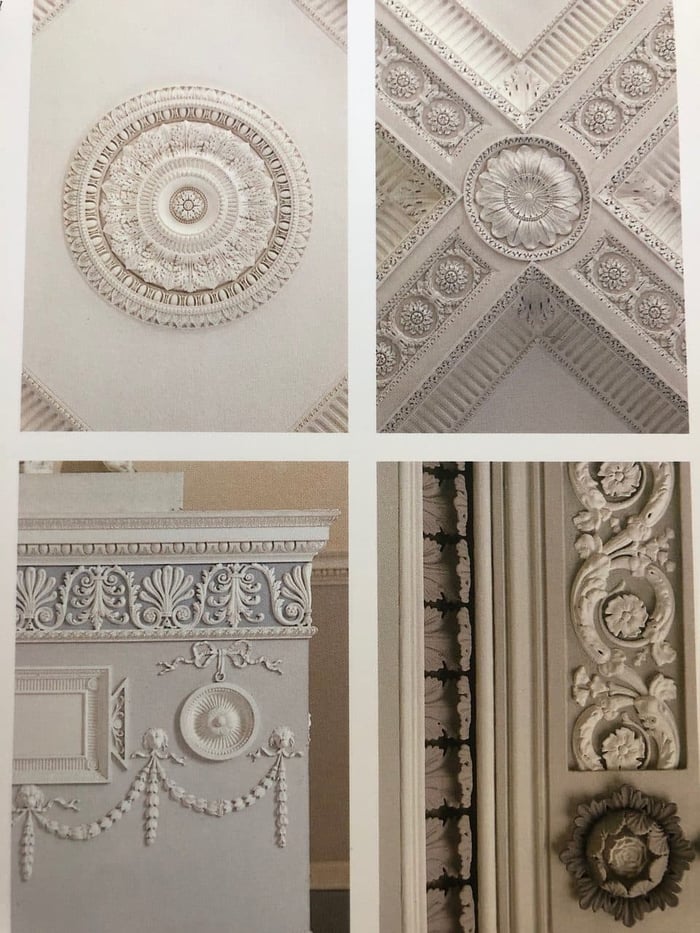
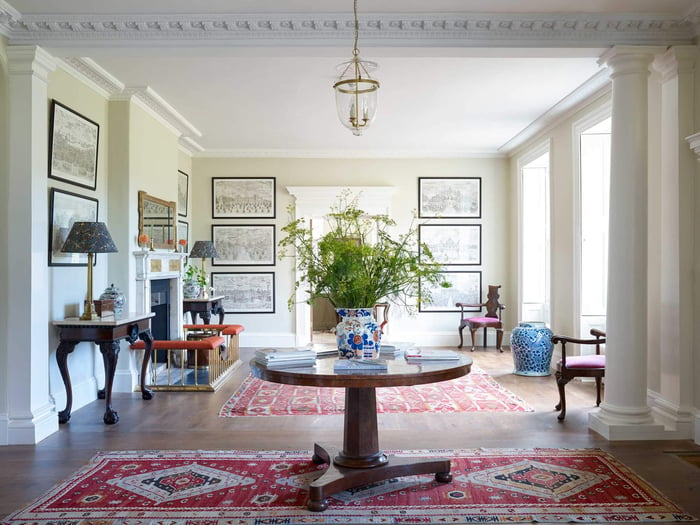 Photo Source: Ben Pentreath
Photo Source: Ben Pentreath
 Photo Source: Ben Pentreath
Photo Source: Ben PentreathFlooring and Surfaces
Dark timber flooring in English oak or mahogany was popular, often arranged in herringbone or chevron patterns for a refined finish.
In entryways and conservatories, monochrome mosaic tiles introduced formality and a sense of classical structure.
To soften the space, wool or silk rugs featuring floral or geometric patterns were layered throughout, sometimes wall-to-wall in more luxurious settings.
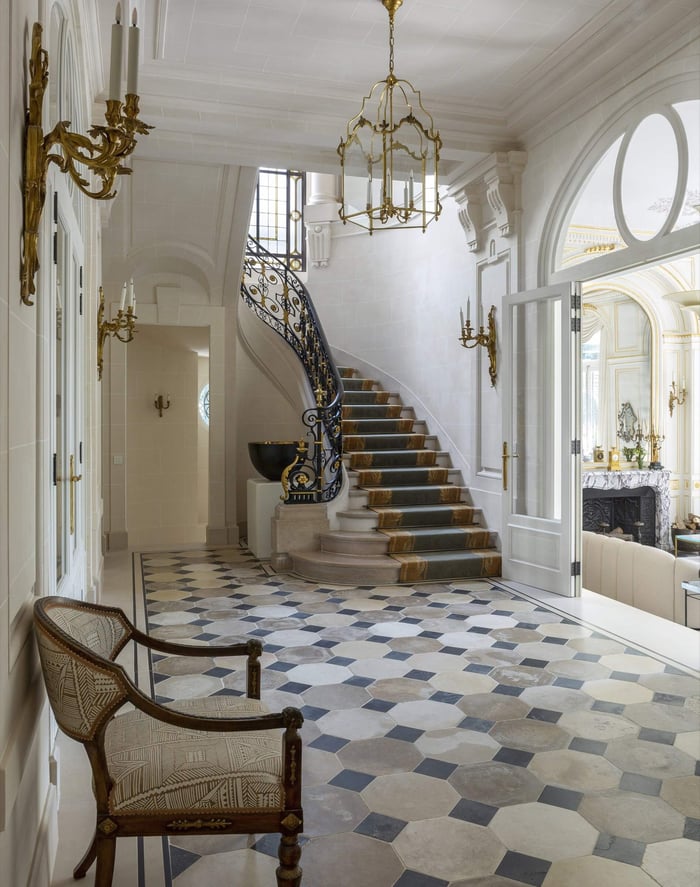
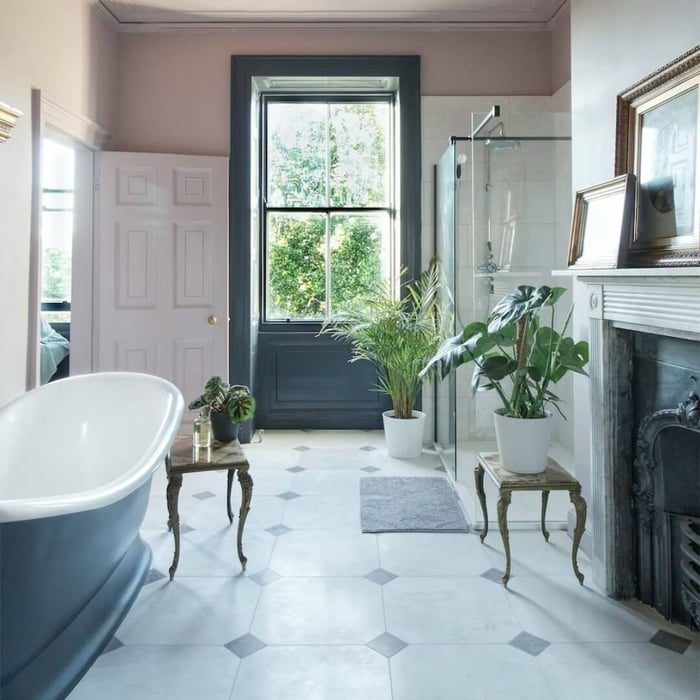 Photo Source: Top: Bryan O'Sullivan Design | Bottom: Man with a Hammer
Photo Source: Top: Bryan O'Sullivan Design | Bottom: Man with a Hammer
Regency Style Lighting
Lighting in Regency interiors was designed to elevate mood and atmosphere as well as highlight architectural and decorative elements.
Crystal chandeliers provided a striking focal point, while wall sconces were used to frame mirrors and artwork. Table and floor lamps with soft fabric shades added gentle, ambient lighting throughout.
Brass, gilt, and crystal were common finishes, bringing a warm glow to the space.
A key innovation of the time was the Argand lamp, which allowed for central room lighting and encouraged more intimate furniture arrangements.
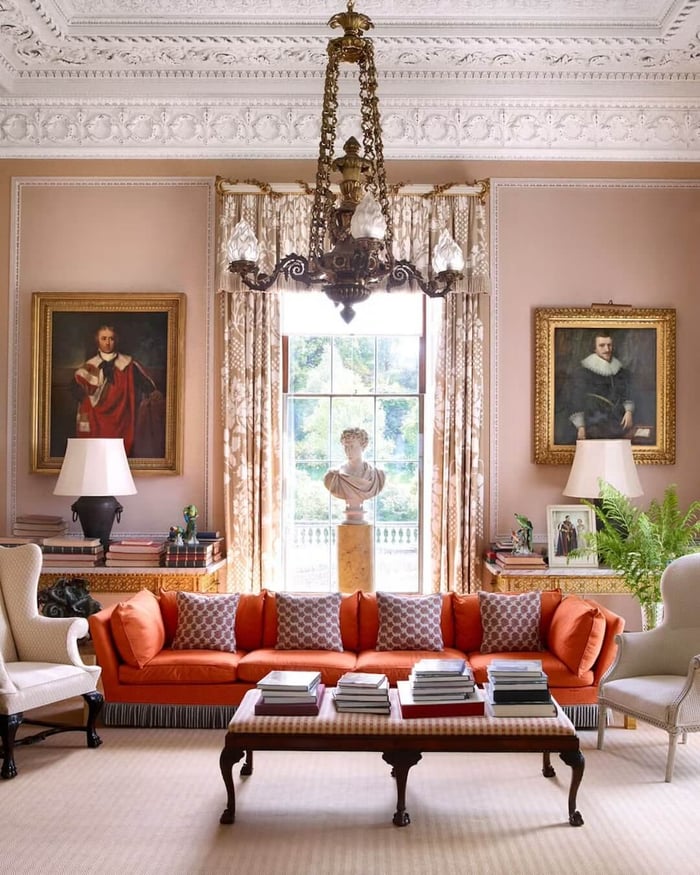 Photo Source: David Hicks
Photo Source: David Hicks
 Photo Source: David Hicks
Photo Source: David HicksWindow Treatments
Window dressings in the Regency period combined structure and softness.
Long, flowing curtains were often layered with pelmets or swagged valances. Fabrics ranged from lightweight floral chintz to more luxurious damasks or velvets, depending on the room.
These treatments framed the windows while also shaping the light, adding movement and a romantic sense of atmosphere.
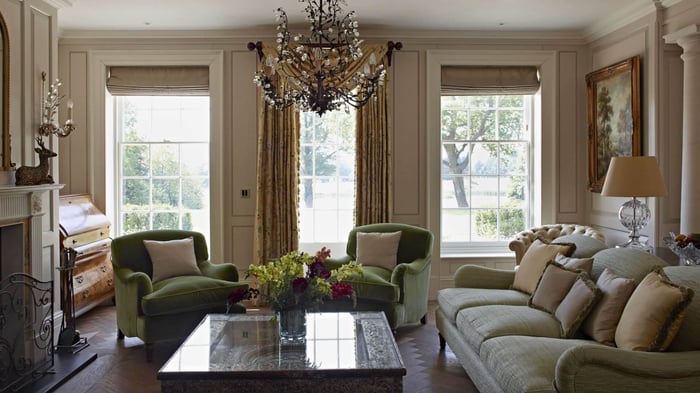 Photo Source: ADAM ArchitectureRegency Furniture and Layout
Photo Source: ADAM ArchitectureRegency Furniture and Layout
 Photo Source: ADAM Architecture
Photo Source: ADAM ArchitectureFurniture of the Regency era was known for its elegance and craftsmanship, drawing on classical motifs.
Pieces were typically made from mahogany, rosewood, or other fine veneers, often accented with brass inlays or gilded details. Designs included graceful curves, saber legs, and Greco-Roman ornamentation such as scrolls, lyres, and laurel wreaths.
Furniture was arranged with symmetry in mind. Groupings of chairs, tables, and accessories were balanced to create visual harmony and a sense of formality.
Key items included glass-fronted bookcases, breakfront cabinets, and Regency secretaires. These were often styled with busts, books, globes, or artefacts collected during the era’s age of exploration.
In some interiors, bamboo-style furniture and chinoiserie elements were introduced to reflect the growing fascination with Eastern design.
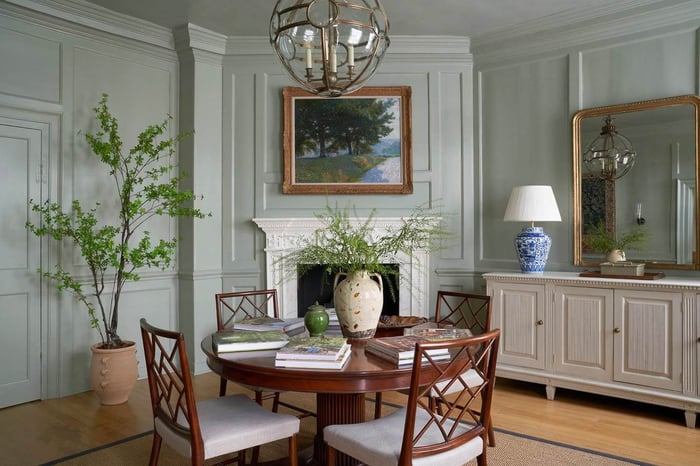 Photo Source: Sims Hilditch
Photo Source: Sims Hilditch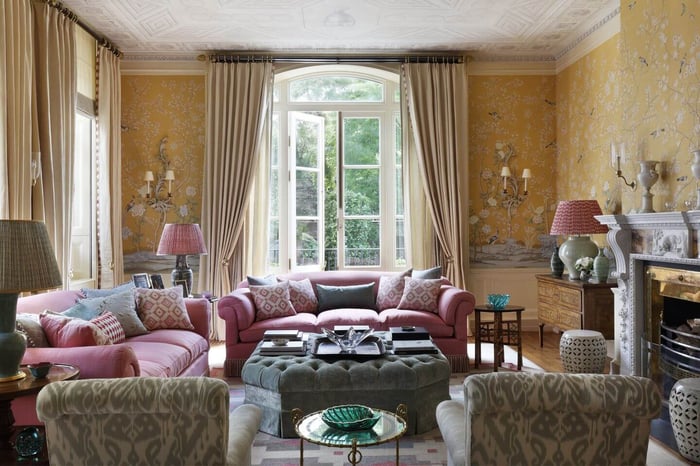 Photo Source: McCall Design
Photo Source: McCall Design
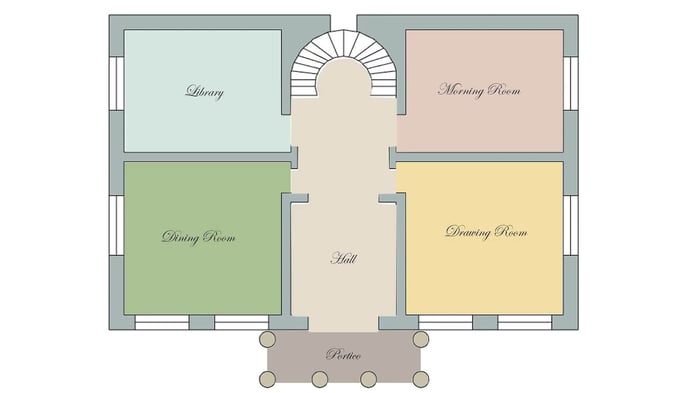 Photo Source: Louise Booyens
Photo Source: Louise Booyens
 Photo Source: Louise Booyens
Photo Source: Louise BooyensSocial Function of the Rooms
Each room in a Regency home served a defined social purpose.
The drawing room was the heart of entertaining, where guests gathered and conversation unfolded.
The morning room had a lighter, more feminine feel and was used for reading, embroidery, or correspondence.
The library or study served as a more private, masculine space—often darker and lined with books, designed for contemplation and writing.
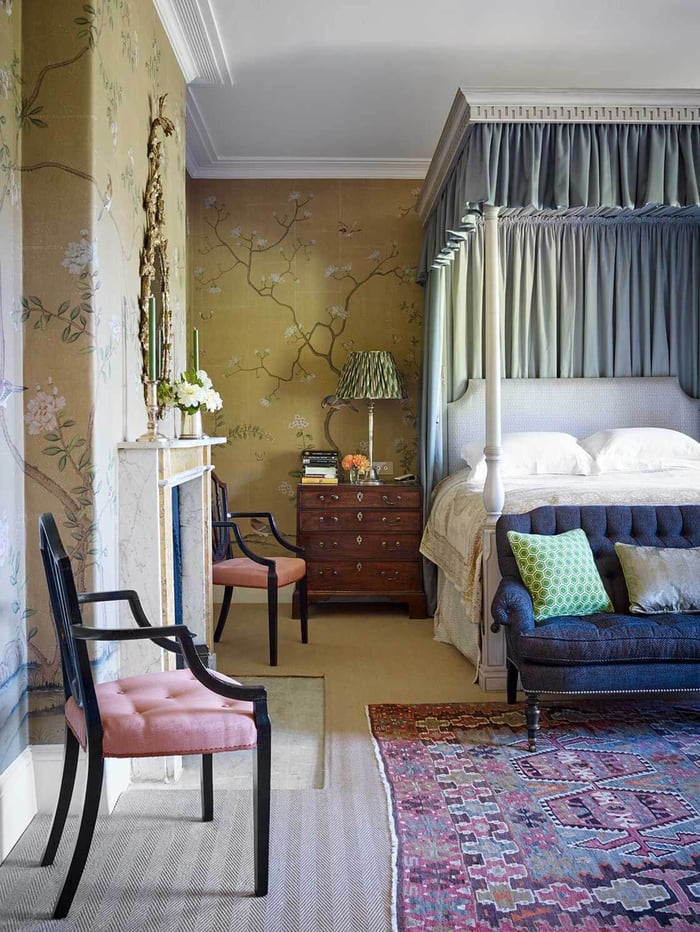 Photo Source: Ben PentreathTexture and Materials
Photo Source: Ben PentreathTexture and Materials
 Photo Source: Ben Pentreath
Photo Source: Ben PentreathRegency interiors were designed to be deeply tactile, appealing to both the eye and the touch.
Fabrics such as silk, satin, and velvet added richness to drapery and upholstery. Decorative damasks were used on both furniture and walls to soften the space and introduce pattern.
Wallpaper played an important role in establishing atmosphere. Popular designs included chinoiserie, neoclassical motifs, and embossed patterns that brought quiet depth and sophistication.
Additional wall treatments included
• Painted panels and stencilled borders
• Grisailles, which are monochrome scenes that mimic sculpture
• Subtly gilded friezes and neoclassical mouldings
Symbolic motifs such as lyres, palmettes, anthemions, laurel wreaths, sphinxes, and griffins could be found throughout interiors, from inlaid furniture to plasterwork.
 Photo Source: Holmleigh Manor
Photo Source: Holmleigh Manor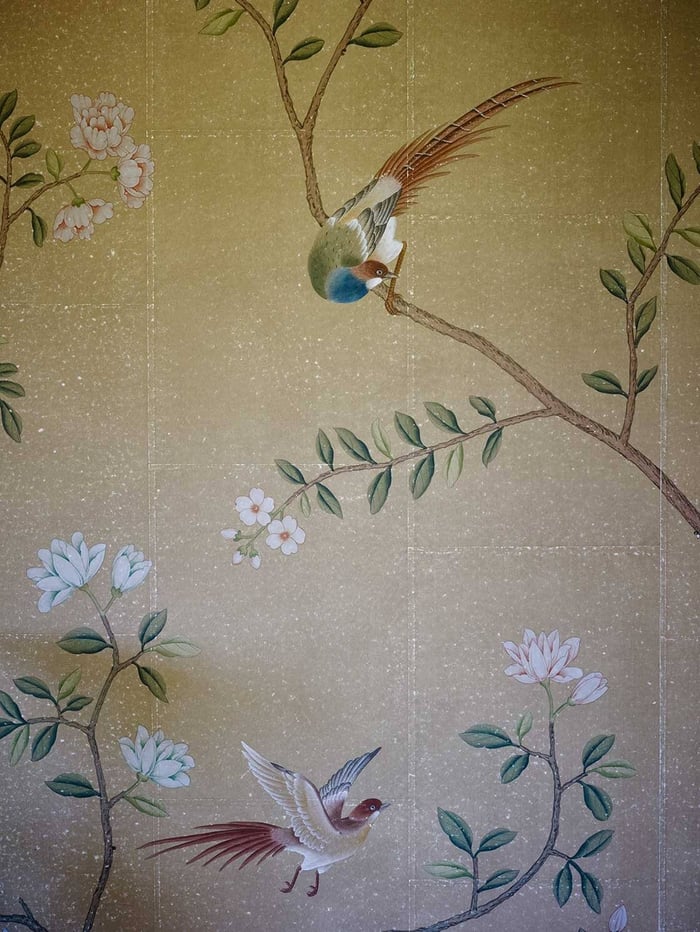 Photo Source: Ben Pentreath
Photo Source: Ben PentreathArtwork and Mirrors
Art played a central role in Regency design, reflecting the era’s admiration for classical learning and refinement.
Common pieces included large oil portraits, landscape paintings, and Grecian-inspired reliefs. These works were chosen to express taste, intellect, and social status.
Gilded mirrors were also essential. Often positioned above a mantel or console, they featured detailed frames with rope borders, bullseyes, or acanthus leaves and helped amplify light and architectural lines.
Antique Portrait of a Lady | Unframed | Circa 1795

$3,695.00
For Australia-wide deliveries, a freight quote does apply for this piece. This is not calculated online and will be in addition to your purchase. Shipping & Delivery Options: In-Store Collection: This item can be collected from our Moss Vale store. Freight Quote for… read more
FLAMANT BELGIUM | MIRROR OSMOND | W116 x D12 x H190cm
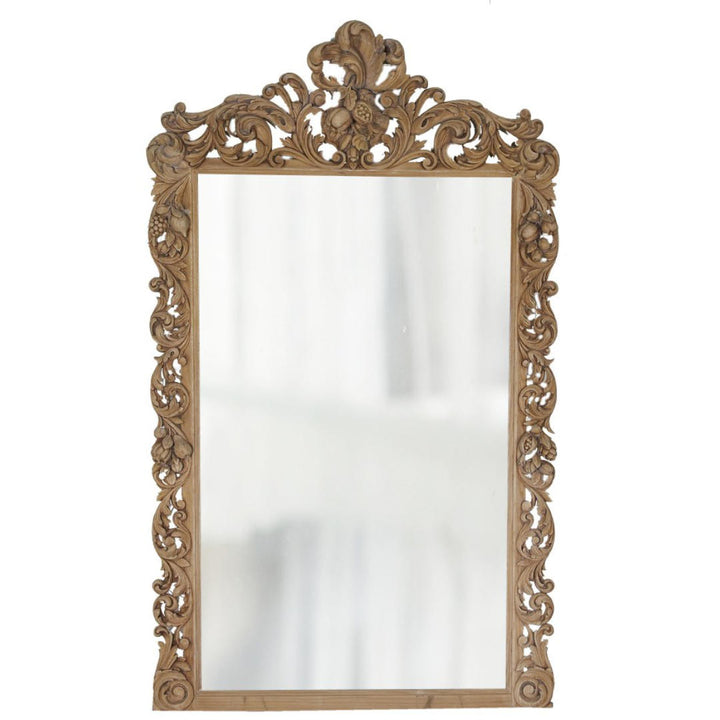
$3,575.00
For Australia-wide deliveries, an additional freight quote does apply for this piece. This is not calculated online and will be in addition to your purchase / standard delivery fee. Shipping & Delivery Options: In-Store Collection: This item can be collected… read more
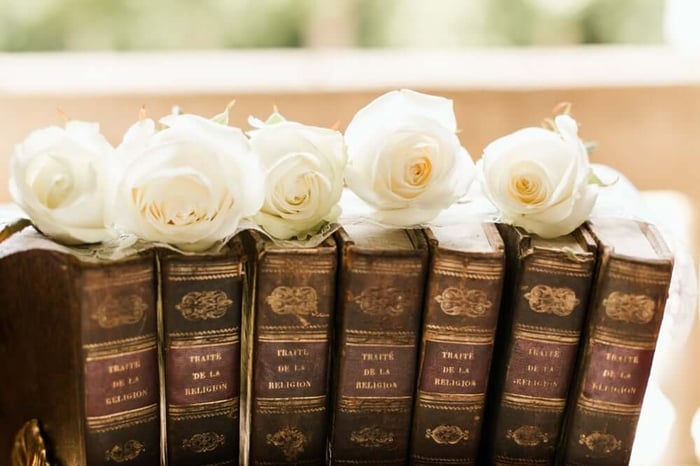 Photo Source: Louise Adby Photography
Photo Source: Louise Adby Photography
 Photo Source: Louise Adby Photography
Photo Source: Louise Adby PhotographyRegency Style Accessories
Regency style accessories were selected for their meaning and character, rather than for excess.
Vintage globes, busts, and leather-bound books conveyed intellect and worldliness. Chinoiserie jars, bamboo decor, and lacquered boxes introduced exotic flair.
For a touch of refinement, add brass or silver candlesticks, multi-arm candelabras, mantel clocks, or a well-placed telescope or urn.
Cire Trudon Abd El Kader Room Spray | 375ml
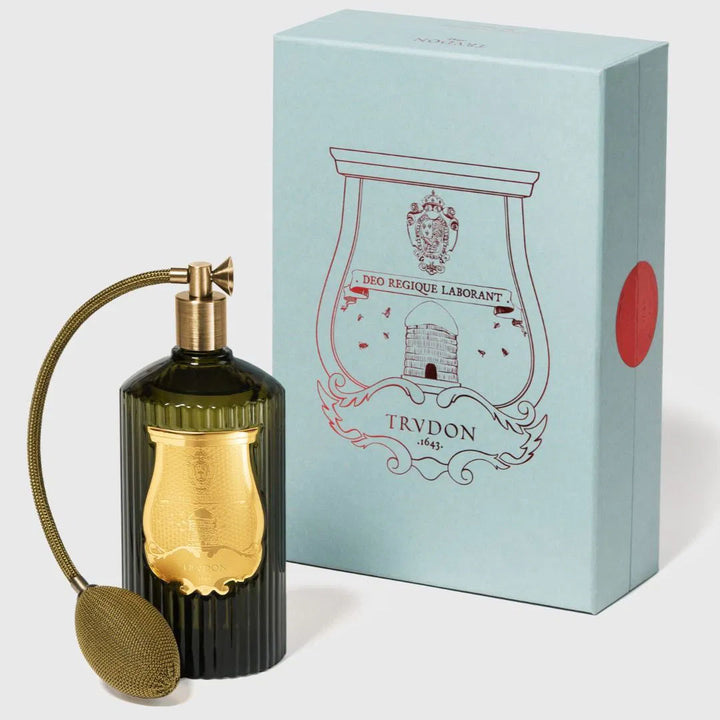
$339.00
Suzie Anderson Home is a proud stockist of Cire Trudon, the world’s most prestigious fragrance house known for its heritage, refinement, and artisanal craftsmanship. Visit our Old Bank Atelier store to explore the full Cire Trudon collection, including their luxurious… read more
Classic Magnesium Bust Statue of a Man
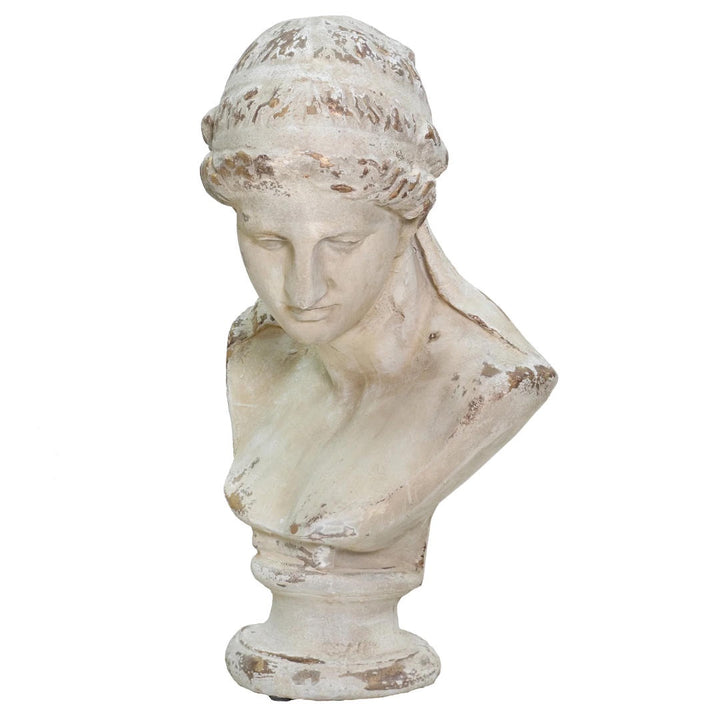
$319.00
For Australia-wide deliveries, an additional freight quote does apply for this piece. This is not calculated online and will be in addition to your purchase / standard delivery fee. Shipping & Delivery Options: In-Store Collection: This item can be collected… read more
Vintage Italian World Globe | Small
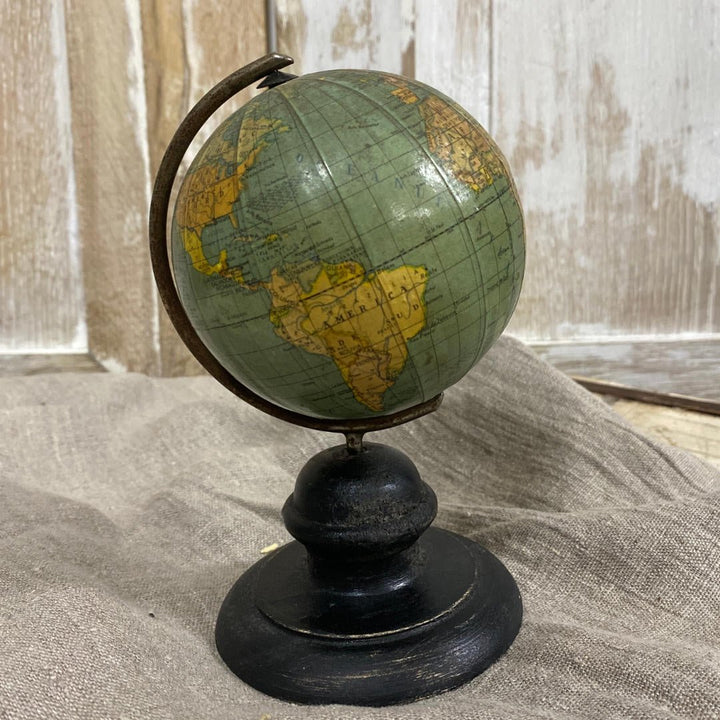
$445.55
Vintage Italian World Globe - Small and Timelessly Stylish Explore the World with Classic Elegance Charming Italian Touch Add a touch of vintage charm to your space with our Vintage Italian World Globe. This small-sized globe brings the beauty of… read more
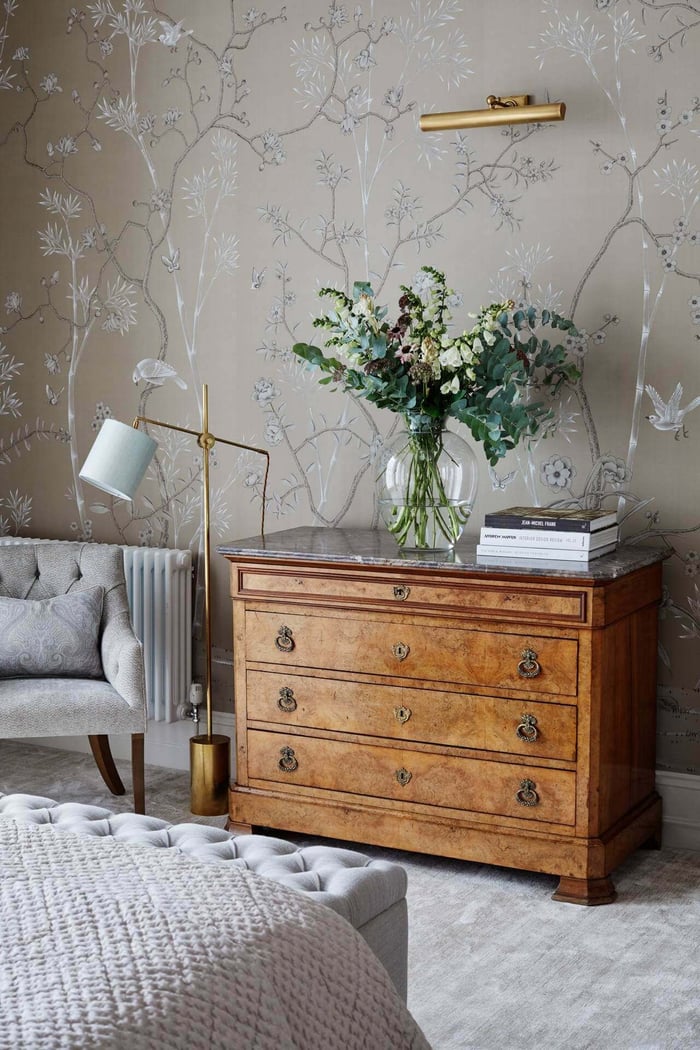 Photo Source: Sims Hilditch
Photo Source: Sims Hilditch
Living Energy: The Role of Plants
While not as prominent as in Victorian homes, greenery still featured in Regency style interiors to introduce freshness and structure.
Ornamental palms, ferns, and topiary were commonly displayed in ceramic, cast iron, or brass planters. Conservatories and orangeries, when present, often showcased rare specimens brought back from abroad and were treated as prized features of the home.
Plants were usually placed with symmetry in mind, reinforcing the balance that defined the period.
Styling tip:
Try flanking a doorway or mantel with matching planters and sculptural greenery for a subtle yet formal statement.
If you enjoyed exploring Regency style interior design, you may also like our videos on Georgian style, Victorian interiors, and our Ben Huon Manor tour, which highlights how timeless design eras can coexist beautifully in the modern day.




